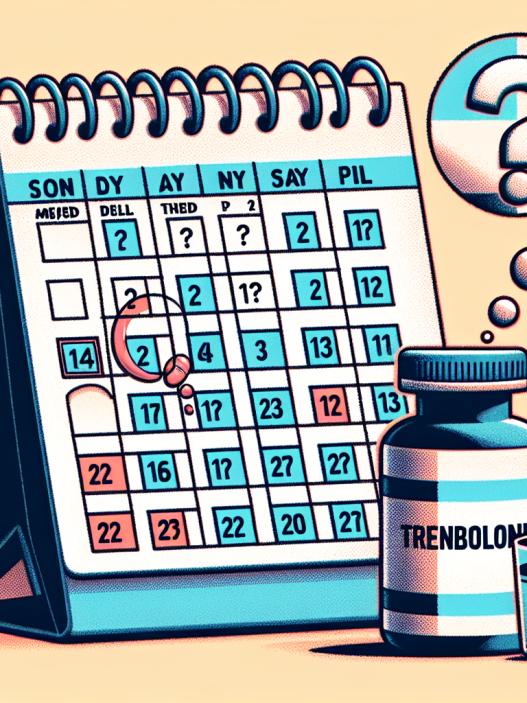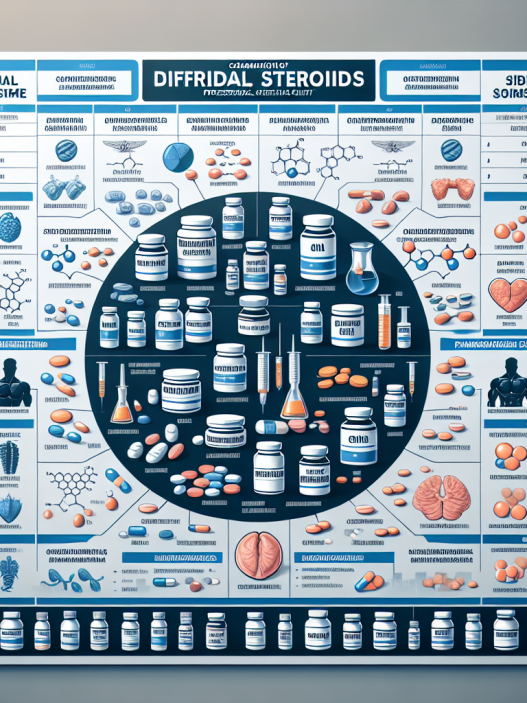-
Table of Contents
«Stay informed and stay safe – learn about documented cases of misuse of Mildronate Dihydricum.»
Introduction
Mildronate Dihydricume, also known as Meldonium, is a drug that was originally developed to treat heart conditions such as angina and heart failure. However, it has gained attention in recent years due to its potential performance-enhancing effects and has been banned by several sports organizations. Unfortunately, there have been numerous documented cases of athletes and individuals misusing Mildronate Dihydricume for its performance-enhancing properties, leading to controversy and sanctions. In this document, we will explore some of the documented cases of misuse of Mildronate Dihydricume and the consequences that have resulted from it.
The Controversy Surrounding the Use of Mildronate Dihydricume in Sports
Mildronate Dihydricume, also known as Meldonium, has been making headlines in the world of sports for its alleged performance-enhancing effects. This drug, originally developed for the treatment of heart conditions, has been at the center of controversy due to its widespread use by athletes. While some claim that it provides numerous benefits, others argue that its use constitutes cheating and goes against the spirit of fair play in sports. In this article, we will delve into the documented cases of misuse of Mildronate Dihydricume and the implications it has on the integrity of sports.
The use of Mildronate Dihydricume in sports first came to light in 2016 when Russian tennis player Maria Sharapova tested positive for the drug during the Australian Open. Sharapova, a five-time Grand Slam champion, claimed that she had been taking the drug for medical reasons for the past ten years and was unaware that it had been added to the World Anti-Doping Agency’s (WADA) list of banned substances. However, her explanation was met with skepticism, and she was subsequently banned from professional tennis for 15 months.
Sharapova’s case sparked a wave of controversy and raised questions about the prevalence of Mildronate Dihydricume use in sports. It also shed light on the lack of awareness among athletes about the substances they are consuming and the importance of staying up-to-date with the WADA’s list of banned substances. This incident was just the tip of the iceberg, as more cases of Mildronate Dihydricume misuse in sports began to surface.
In 2018, Russian curler Alexander Krushelnitsky tested positive for Mildronate Dihydricume during the Winter Olympics in Pyeongchang. Krushelnitsky, who won a bronze medal in mixed doubles curling, claimed that he had been taking the drug for medical reasons and that his sample must have been contaminated. However, the Court of Arbitration for Sport (CAS) rejected his appeal, and he was stripped of his medal.
The use of Mildronate Dihydricume is not limited to individual sports; it has also been documented in team sports. In 2019, the International Ice Hockey Federation (IIHF) announced that three Russian ice hockey players had tested positive for the drug during the World Championship. The players, who were part of the Russian team that won the gold medal, were subsequently disqualified, and their medals were revoked.
These cases of Mildronate Dihydricume misuse have raised concerns about the effectiveness of drug testing in sports. Despite being on the WADA’s list of banned substances, the drug can still be detected in an athlete’s system up to several months after its use. This has led to debates about the appropriate length of bans for athletes who test positive for Mildronate Dihydricume and whether they should be treated the same as those who use other performance-enhancing drugs.
Moreover, the use of Mildronate Dihydricume has also brought into question the role of doctors and medical professionals in sports. In many of the documented cases, athletes have claimed that they were prescribed the drug by their doctors for legitimate medical reasons. This raises concerns about the ethical responsibility of doctors and their role in ensuring that their patients are not using banned substances.
In conclusion, the documented cases of Mildronate Dihydricume misuse in sports have shed light on the prevalence of this drug in the world of athletics. While some athletes may genuinely require the drug for medical reasons, its use by others for performance enhancement goes against the principles of fair play in sports. The controversy surrounding Mildronate Dihydricume highlights the need for stricter drug testing protocols and increased awareness among athletes about the substances they are consuming. It also calls for a closer examination of the role of doctors and medical professionals in sports and their ethical responsibilities towards their patients. Only by addressing these issues can we ensure the integrity and fairness of sports competitions.
The Legal Implications of Documented Cases of Mildronate Dihydricume Misuse
Mildronate Dihydricume, also known as Meldonium, is a drug that has gained significant attention in recent years due to its alleged performance-enhancing effects. Originally developed to treat heart conditions, it has been banned by the World Anti-Doping Agency (WADA) since 2016 due to its potential to improve athletic performance. However, despite the ban, there have been numerous documented cases of athletes and individuals misusing this drug for its performance-enhancing properties. This has raised serious legal implications for both the individuals involved and the organizations responsible for enforcing anti-doping regulations.
One of the most high-profile cases of Mildronate Dihydricume misuse was that of Russian tennis player Maria Sharapova. In 2016, Sharapova tested positive for the drug at the Australian Open and was subsequently banned from professional tennis for 15 months. She claimed to have been taking the drug for medical reasons and was unaware of its inclusion on the WADA banned substances list. However, this case sparked a debate about the responsibility of athletes to be aware of the substances they are putting into their bodies and the consequences of not following anti-doping regulations.
In addition to individual athletes, there have also been cases of entire teams being implicated in Mildronate Dihydricume misuse. In 2018, the Russian Bobsleigh Federation was banned from the Winter Olympics after four of its athletes tested positive for the drug. This not only had legal implications for the athletes involved but also for the federation as a whole. The International Olympic Committee (IOC) has strict rules and regulations in place to prevent doping in sports, and organizations found to be in violation of these rules can face severe penalties.
The legal implications of Mildronate Dihydricume misuse are not limited to the sports world. In 2016, the Latvian pharmaceutical company Grindeks, which produces Mildronate, filed a lawsuit against WADA for including the drug on its banned substances list. The company argued that there was not enough scientific evidence to support the ban and that it was causing significant financial losses. This case highlights the potential legal consequences for organizations and companies involved in the production and distribution of banned substances.
Aside from the legal implications for individuals and organizations, there are also ethical considerations to be made in cases of Mildronate Dihydricume misuse. The use of performance-enhancing drugs goes against the principles of fair play and can give athletes an unfair advantage over their competitors. This not only undermines the integrity of sports but also raises questions about the health and safety of athletes who may be taking these drugs without proper medical supervision.
In response to the documented cases of Mildronate Dihydricume misuse, WADA has increased its efforts to educate athletes and organizations about the banned substance. They have also implemented stricter testing protocols and penalties for those found to be in violation of anti-doping regulations. However, the responsibility ultimately falls on the athletes and organizations to ensure that they are following the rules and regulations set forth by WADA.
In conclusion, the documented cases of Mildronate Dihydricume misuse have significant legal implications for both individuals and organizations involved in sports and the production of banned substances. These cases have sparked debates about the responsibility of athletes to be aware of the substances they are taking and the consequences of not following anti-doping regulations. It is crucial for all parties involved to understand the seriousness of this issue and work towards maintaining the integrity of sports and promoting fair play.
The Impact of Mildronate Dihydricume Abuse on Athletes’ Health and Careers
Mildronate Dihydricume, also known as Meldonium, is a drug that has gained significant attention in the world of sports in recent years. Originally developed to treat heart conditions, it has been found to have performance-enhancing effects and has been used by athletes to improve their physical abilities. However, the abuse of this drug has led to serious consequences for both the athletes and the sports industry as a whole.
The use of Mildronate Dihydricume in sports was first brought to light in 2016 when Russian tennis player Maria Sharapova tested positive for the drug during the Australian Open. She claimed to have been taking the drug for medical reasons and was unaware that it had been added to the World Anti-Doping Agency’s (WADA) list of banned substances. This incident sparked a global debate on the use of Mildronate Dihydricume in sports and its potential effects on athletes’ health.
One of the main concerns surrounding the abuse of Mildronate Dihydricume is its impact on athletes’ cardiovascular health. The drug works by increasing blood flow and oxygen delivery to the muscles, which can improve endurance and performance. However, this can also put a strain on the heart, especially when combined with intense physical activity. Studies have shown that long-term use of Mildronate Dihydricume can lead to an increased risk of heart attacks, strokes, and other cardiovascular problems.
Apart from the physical health risks, the abuse of Mildronate Dihydricume also has severe consequences for athletes’ careers. The use of banned substances in sports is a violation of the rules and regulations set by governing bodies such as WADA and the International Olympic Committee (IOC). Athletes who test positive for Mildronate Dihydricume face suspensions, fines, and even the loss of their titles and medals. This not only tarnishes their reputation but also has a significant impact on their future in the sport.
One of the most high-profile cases of Mildronate Dihydricume abuse in recent years is that of Russian track and field athlete, Yuliya Stepanova. She and her husband, Vitaly Stepanov, were instrumental in exposing the widespread use of performance-enhancing drugs in Russian sports. However, it was later revealed that Stepanova had also been using Mildronate Dihydricume, which led to her being banned from competing in the 2016 Olympics. This raised questions about the credibility of her testimony and the impact of her actions on the fight against doping in sports.
The abuse of Mildronate Dihydricume not only affects individual athletes but also has a broader impact on the sports industry. The use of performance-enhancing drugs undermines the integrity of sports and creates an unfair playing field for clean athletes. It also damages the trust and credibility of sports organizations and sponsors, leading to financial losses and a decline in viewership.
In response to the growing concerns about the abuse of Mildronate Dihydricume, WADA has tightened its regulations and increased the penalties for athletes who test positive for the drug. However, the problem persists, and there have been several documented cases of athletes using the drug despite the consequences.
In conclusion, the abuse of Mildronate Dihydricume has far-reaching consequences for athletes’ health and careers, as well as the sports industry as a whole. It not only poses a threat to athletes’ physical well-being but also undermines the integrity and fairness of sports. It is crucial for athletes to understand the risks associated with the use of this drug and for sports organizations to continue implementing strict measures to prevent its abuse. Only then can we ensure a level playing field for all athletes and maintain the integrity of sports.
Q&A
1) ¿Qué es el Mildronate Dihydricum?
El Mildronate Dihydricum es un medicamento que contiene la sustancia activa meldonium, utilizado para tratar enfermedades cardiovasculares y mejorar el rendimiento físico en atletas.
2) ¿Cuáles son los casos documentados de mal uso de Mildronate Dihydricum?
Existen varios casos documentados de mal uso de Mildronate Dihydricum en el ámbito deportivo, especialmente en el tenis y el ciclismo. En 2016, la tenista rusa Maria Sharapova dio positivo por meldonium en un control antidopaje y fue suspendida por 15 meses. También se han reportado otros casos en deportistas de alto nivel como el ciclista ruso Eduard Vorganov y el patinador de velocidad ruso Pavel Kulizhnikov.
3) ¿Por qué se considera el Mildronate Dihydricum como una sustancia dopante?
El Mildronate Dihydricum se considera una sustancia dopante porque puede mejorar el rendimiento físico al aumentar la resistencia y reducir la fatiga. Además, también puede mejorar la recuperación después del ejercicio y aumentar la capacidad de transporte de oxígeno en el cuerpo. Por estas razones, su uso está prohibido en competiciones deportivas y su detección en un control antidopaje puede resultar en sanciones para los deportistas.









